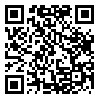

Volume 19, Issue 4 (1-2022)
RBS 2022, 19(4): 647-661 |
Back to browse issues page
Download citation:
BibTeX | RIS | EndNote | Medlars | ProCite | Reference Manager | RefWorks
Send citation to:



BibTeX | RIS | EndNote | Medlars | ProCite | Reference Manager | RefWorks
Send citation to:
Nik bakht A, Nik bakht A, Zarei E. Presenting Corona Anxiety Model Based on Locus of control, Emotion Regulation Strategies, Perceived Social Support and Disease Anxiety with the Mediating Role of Cognitive-Behavioral Avoidance. RBS 2022; 19 (4) :647-661
URL: http://rbs.mui.ac.ir/article-1-1156-en.html
URL: http://rbs.mui.ac.ir/article-1-1156-en.html
1- Masters student. in General Psychology, University of Hormozgan. Iran
2- Assistant Professor, Department of Psychology, University of Hormozgan. Iran ,nikbakht472@gmail.com
3- Associate professor, Department of Psychology, University of Hormozgan. Iran
2- Assistant Professor, Department of Psychology, University of Hormozgan. Iran ,
3- Associate professor, Department of Psychology, University of Hormozgan. Iran
Abstract: (4143 Views)
Aim and Background: The prevalence of coronavirus, the unknown and cognitive ambiguities of this virus and the resulting mortality rate, cause high anxiety in individual. The aim of this study was to provide a model of coronary anxiety based on locus of control, emotion regulation strategies, perceived social support and disease anxiety with emphasis on the mediating role of cognitive-behavioral avoidance in students.
Methods and Materials: The present study is of descriptive-correlation and structural equation modeling. The research population were Isfahan university students in the spring of 1400. From the population, according to Cochran's formula, 250 people were selected by available sampling and Rotter's Internal-External Locus of Control Scale (1966), Emotion Regulation Questionnaire (2004), Health Anxiety Questionnaire (2002), Perceived Social Support Questionnaire (1988), Avoidance Inventory (1994) and the Coronavirus Anxiety Scale (2019) were delivered to them virtually. Statistical analysis was performed by covariance-based structural equation modeling using Amos software.
Findings: The results showed that there is a direct relationship between the locus of control and disease anxiety with corona anxiety in students and these two variables explain 64% of the variance of corona anxiety in students (p<.05). also the results showed that cognitive-behavioral avoidance does not play a mediating role in these relationships.
Conclusions: Based on the results, it is necessary to take measures to reduce the locus of control and reduce disease anxiety in order to reduce corona anxiety in students.
Methods and Materials: The present study is of descriptive-correlation and structural equation modeling. The research population were Isfahan university students in the spring of 1400. From the population, according to Cochran's formula, 250 people were selected by available sampling and Rotter's Internal-External Locus of Control Scale (1966), Emotion Regulation Questionnaire (2004), Health Anxiety Questionnaire (2002), Perceived Social Support Questionnaire (1988), Avoidance Inventory (1994) and the Coronavirus Anxiety Scale (2019) were delivered to them virtually. Statistical analysis was performed by covariance-based structural equation modeling using Amos software.
Findings: The results showed that there is a direct relationship between the locus of control and disease anxiety with corona anxiety in students and these two variables explain 64% of the variance of corona anxiety in students (p<.05). also the results showed that cognitive-behavioral avoidance does not play a mediating role in these relationships.
Conclusions: Based on the results, it is necessary to take measures to reduce the locus of control and reduce disease anxiety in order to reduce corona anxiety in students.
Keywords: Coronavirus Anxiety, locus of control, Emotion Regulation Strategies, Perceived Social Support, Disease Anxiety, Cognitive-Behavioral Avoidance.
Type of Study: Research |
Subject:
Special
Received: 2021/10/5 | Accepted: 2022/02/10 | Published: 2022/04/12
Received: 2021/10/5 | Accepted: 2022/02/10 | Published: 2022/04/12
Send email to the article author
| Rights and permissions | |
 |
This work is licensed under a Creative Commons Attribution-NonCommercial 4.0 International License. |





